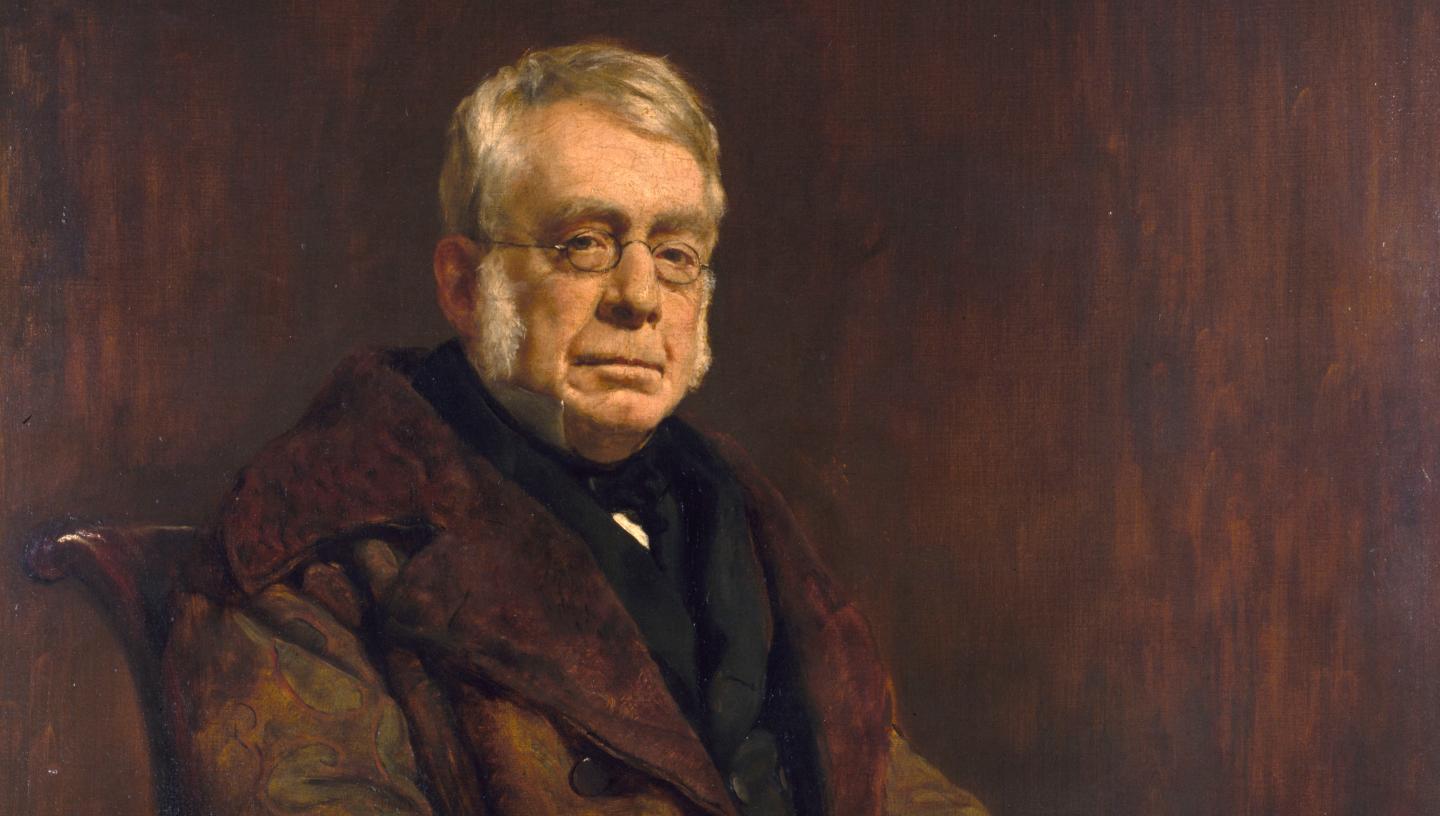
Astronomer Royal George Biddell Airy and his many measuring devices
George Biddell Airy was Astronomer Royal for much of the 19th century and he amassed a treasure trove of data.
The primary concern of the Observatory had always been the production of accurate tables of star positions for navigators. George Biddell Airy, Astronomer Royal between 1835 and 1881, insisted that this remained its main duty, even though he felt obliged to make some contribution to contemporary studies on the nature of the Universe.
He made many improvements, ordering new observing instruments, including the Airy Transit Circle. These were often to his own design and frequently automated in order to limit human error and increase efficiency. In 1852 Airy automated the time-ball, installed by his predecessor in 1833, by using an electric signal from the Shepherd Standard Clock in the Observatory.
Airy's Reflex Zenith Tube
This telescope was invented by Airy in 1851 to observe the positions of stars that pass almost vertically overhead. An important use was to provide a reference for the other meridian instruments.
Airy was puzzled by variations in the results. Only at the end of the 19th century, after he retired, was it realised that they were due to very small variations of latitude caused by the wandering of the Earth's axis of rotation.
Thermometers
The Observatory has always used thermometers as temperature affects the atmosphere, and thus how easy it is to see the stars. Under Airy, thermometers were used in a wider programme to study meteorology. Astronomers at Greenwich made a daily record of the local variations in temperature.
Sunshine recorder
Conditions such as changes in atmospheric pressure and temperature can affect astronomical readings. James Bradley (second Astronomer Royal, 1742–62) started regular barometer and thermometer readings in 1750, a series which remained unbroken until 1956 and remains the longest series of readings in the United Kingdom.
On being appointed, George Airy (seventh Astronomer Royal, 1835–81) established a Magnetic and Meteorological Department with James Glaisher as superintendent. As part of Airy’s meteorological work at the Observatory, daily measurements of the hours of sunlight were made using sunshine recorders.
The instrument works by focusing the Sun's rays through the glass sphere onto a strip of card placed inside the bowl. As the Sun moves across the sky the focused rays burn a strip in the card, which is measured against a time scale.
Dip circle
During the 19th century, the Observatory became an important centre for measuring changes in terrestrial magnetism because of the way it directly affects compass navigation. Magnetic and meteorological records began at the Observatory under Airy’s predecessor, but Airy introduced systematic daily readings. Airy regarded the study of terrestrial magnetism as important for the Observatory’s duty to improve navigation because it helped understanding of the nature of the compass.
This instrument was designed by George Airy to measure the 'dip' or vertical variations in the Earth's magnetic field.